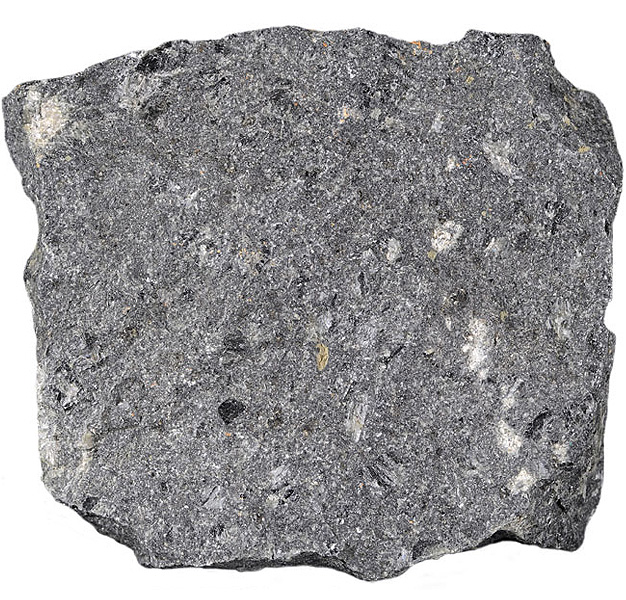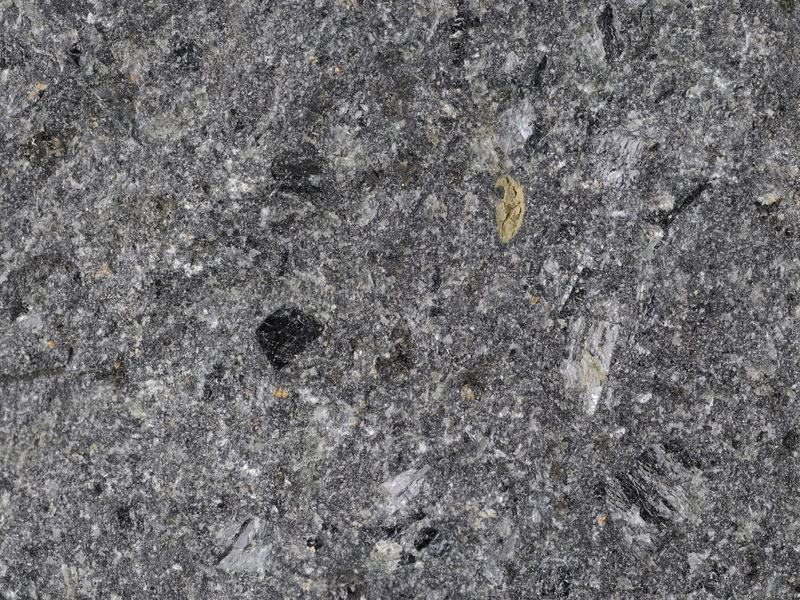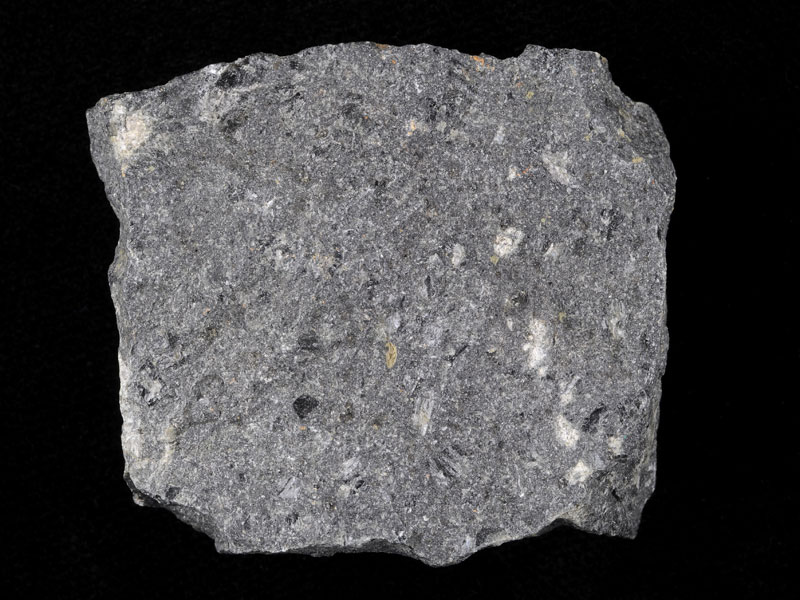
Fact sheet
This fine-grained volcanic rock has a similar composition to basalt, but the oligoclase composition plagioclase feldspar and presence of orthoclase, a potassium rich feldspar, mark it as unusual. The sample comes from a suite of Lower Carboniferous alkaline volcanic rocks in the Scottish Borders, similar in age and composition to others in the Midland Valley of Scotland further north. This sample is from Mellerstain Hill quarry, near Kelso.
In thin section the rock contains olivine phenocrysts altered to chlorite and clay minerals along cracks, grey-pink pyroxene phenocrysts, small orthoclase feldspar phenocrysts and compositionally zoned plagioclase, and some phenocrysts showing almost sieve-like resorption textures. The groundmass comprises plagioclase, pyroxene, olivine and iron oxides.
The United Kingdom Virtual Microscope (UKVM) collection consists of igneous, sedimentary and metamorphic rocks from around the UK.
It is intended as a teaching resource, helping to tell the story of the common rock types and how they form, and reflecting the history of the UK at the margins of the continent of Europe. The collection is a series of teaching sets, for example igneous rocks from the North Atlantic Igneous Province and SW England; high-temperature metamorphic rocks from Scotland and low-temperature metamorphic rocks from Wales; and sedimentary rocks, including English limestones and sandstones.








